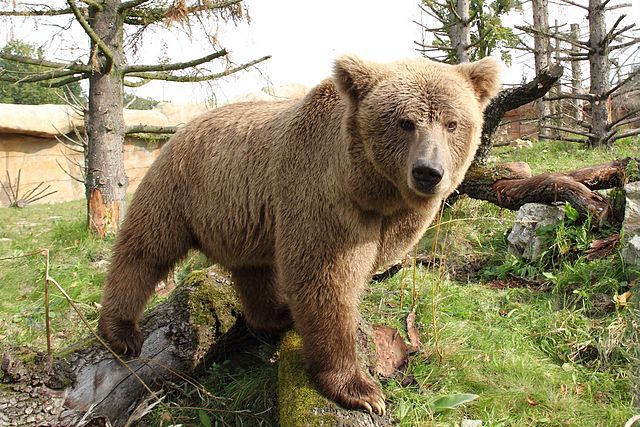The Himalayan brown bear, also known as the Himalayan red bear or isabelline bear, is a subspecies of the brown bear occurring in the western Himalayas. It is the largest mammal in the region, males reaching up to 2.2 m long, while females are a little smaller. It is omnivorous and hibernates in dens during the winter.
Image: Medvěd plavý (Ursus arctos isabellinus)
Image: Himalayan brown bear area
Himalayan brown bear with cubs on the trek from Gangotri to Gaumukh in Uttarakhand, India
Skull
The brown bear is a large bear species found across Eurasia and North America. It is one of the largest living terrestrial members of the order Carnivora, rivaled in size only by its closest relative, the polar bear, which is much less variable in size and slightly bigger on average. Adults of different subspecies range in weight from 80 to 600 kg, with males being heavier than females. Despite its name, brown bears aren't entirely brown; the pelage can be reddish to yellowish-brown, and dark brown to cream in color. During winter, brown bears in some populations hibernate and emerge during spring to regain up to 180 kg (400 lb) of weight. They have well developed dentition and claws, ideal for their lifestyle.
Brown bear
Adult female Eurasian brown bear, the nominate subspecies
Possible grizzly-black bear hybrid in the Yukon Territory, Canada
Brown bears are highly variable in size. Eurasian brown bears often fall around the middle to low sizes for the species.








